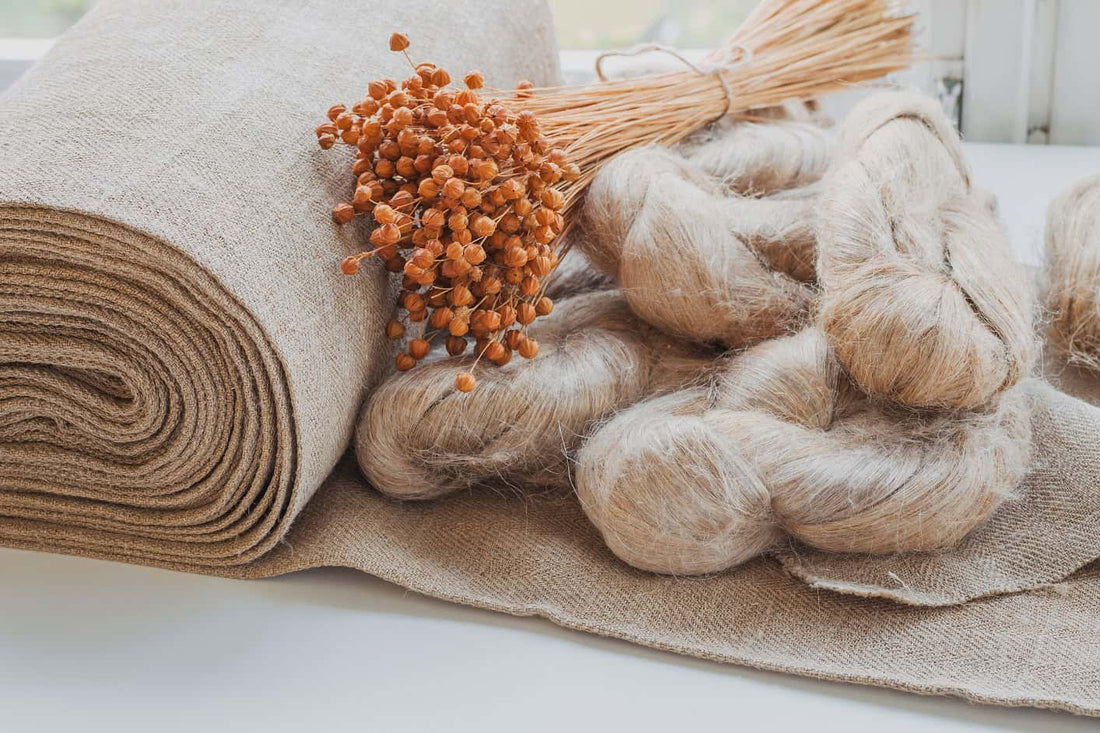
Linen: Versatile and sustainable
Compartir
Linen is one of the oldest and most appreciated fabrics in human history. Its use dates back thousands of years and it has been valued for its durability, freshness and elegance. In this article, we will explore the history of linen, its unique characteristics, production processes and its many applications in fashion and decoration.

History of Flax
Linen is a textile fiber obtained from the flax plant, scientifically known as Linum usitatissimum . This plant has been cultivated since prehistoric times. The first records of the use of linen are found in ancient Egypt, where it was used to wrap mummies due to its preservative properties. In addition, the Egyptians valued linen for its freshness and used it to make light and comfortable clothing.
During the Middle Ages, linen became an essential fabric in Europe. It was commonly used to make bedclothes, shirts, and other household items. In the Renaissance, linen gained popularity among artists, who used it as a canvas for their paintings due to its durability and texture.

Characteristics of Flax
Linen is known for several distinctive characteristics that make it unique among natural fabrics:
- Durability : Linen is one of the strongest natural fibers. Its tensile strength is superior to that of cotton, making it ideal for garments and textiles that require durability.
- Coolness and Breathability : Linen is highly breathable and has the ability to absorb and release moisture quickly. This makes it an excellent choice for hot and humid climates.
- Texture and Appearance : Linen has a distinctive texture that is both soft and slightly rough. Its natural and elegant appearance makes it popular in fashion and decoration.
- Sustainability : Linen is an eco-friendly fibre. Its cultivation requires less water and pesticides compared to other fibres such as cotton. In addition, it is biodegradable and recyclable.

Linen Production Process
The linen production process is laborious and requires several stages:
- Cultivation : Flax is grown in temperate climates. Seeds are sown in spring and the plant grows for about 100 days before being harvested.
- Harvest : Harvesting takes place when the plants are in full bloom. The plants are uprooted to preserve the length of the fibres.
- Retting : This process involves immersing the plants in water to break down the pectin that binds the fibres to the stem. This can be done in ponds, rivers or by modern methods such as enzymatic retting.
- Drying and Hauling : After retting, the plants are dried and beaten to separate the fibers from the stem.
- Spinning : Fibers are spun to create linen threads, which are then woven into fabrics.
Uses of Flax
Linen has a wide range of applications in fashion and home decor:
- Clothing : Linen is popular for summer clothing due to its coolness and breathability. It is used to make shirts, dresses, pants and suits.
- Bedding : Linen sheets and pillowcases are prized for their softness and ability to regulate body temperature.
- Home Decor : Linen is used in curtains, tablecloths, napkins and upholstery. Its elegant and natural appearance adds a sophisticated touch to any space.
- Art : Linen canvases are preferred by many artists due to their durability and texture.

Linen Care
Linen requires special care to maintain its properties and appearance:
- Washing : It is recommended to wash linen by hand or on a gentle cycle in the washing machine. The use of bleaches and fabric softeners should be avoided.
- Drying : Linen should be air dried or tumble dried on low. It is important not to overload the dryer to avoid excessive wrinkling.
- Ironing : Linen wrinkles easily, so it is necessary to iron it while it is still slightly damp. Use an iron at a medium-high temperature.
To conclude, we can say that linen is a versatile and sustainable fabric that has been valued throughout history for its many qualities. Its durability, freshness and elegance make it an ideal choice for both fashion and home decor. In addition, its ecological production and its ability to biodegrade position it as an environmentally friendly fiber. Without a doubt, linen will continue to be a fabric appreciated and used in various applications in the future.
